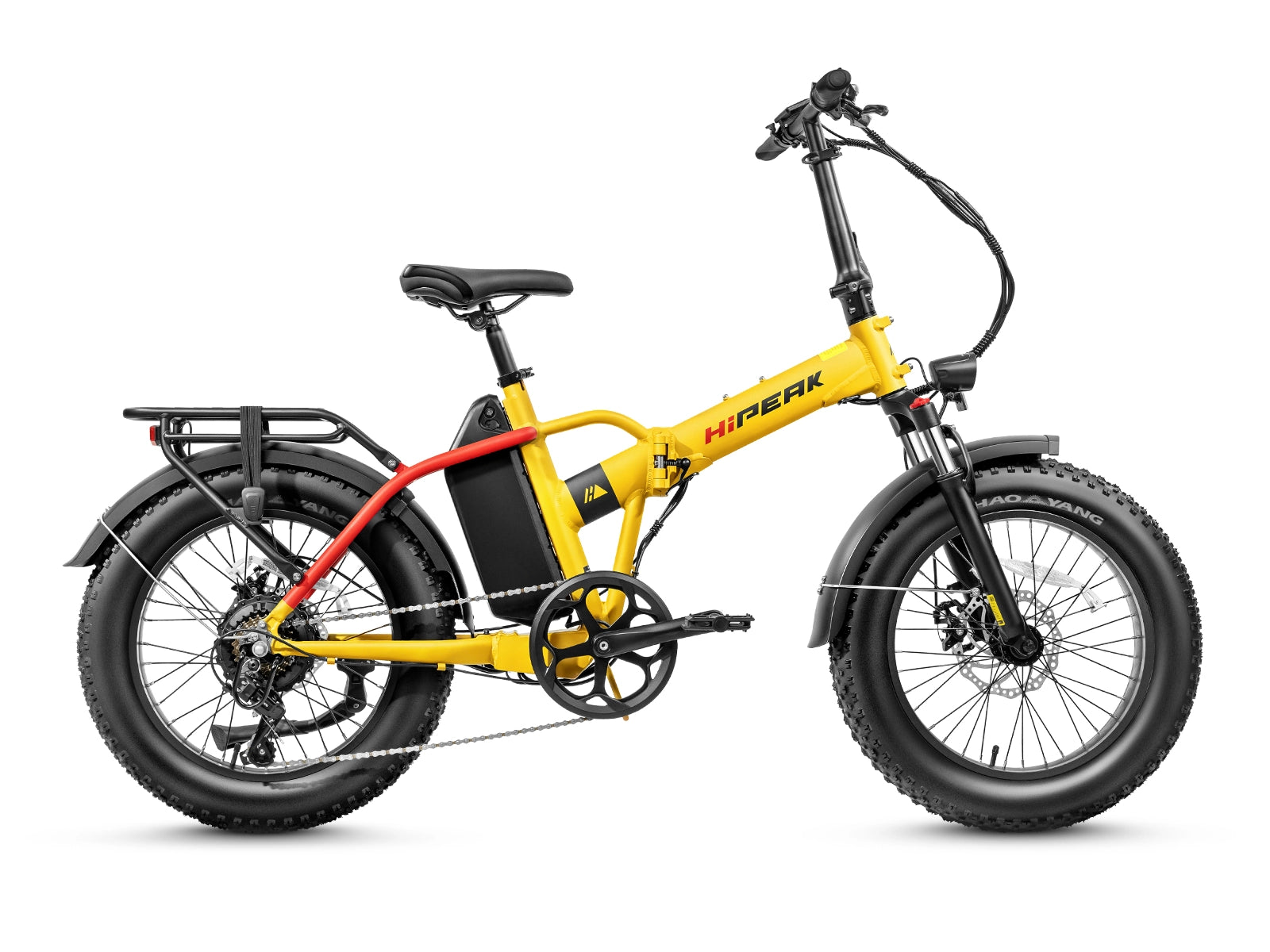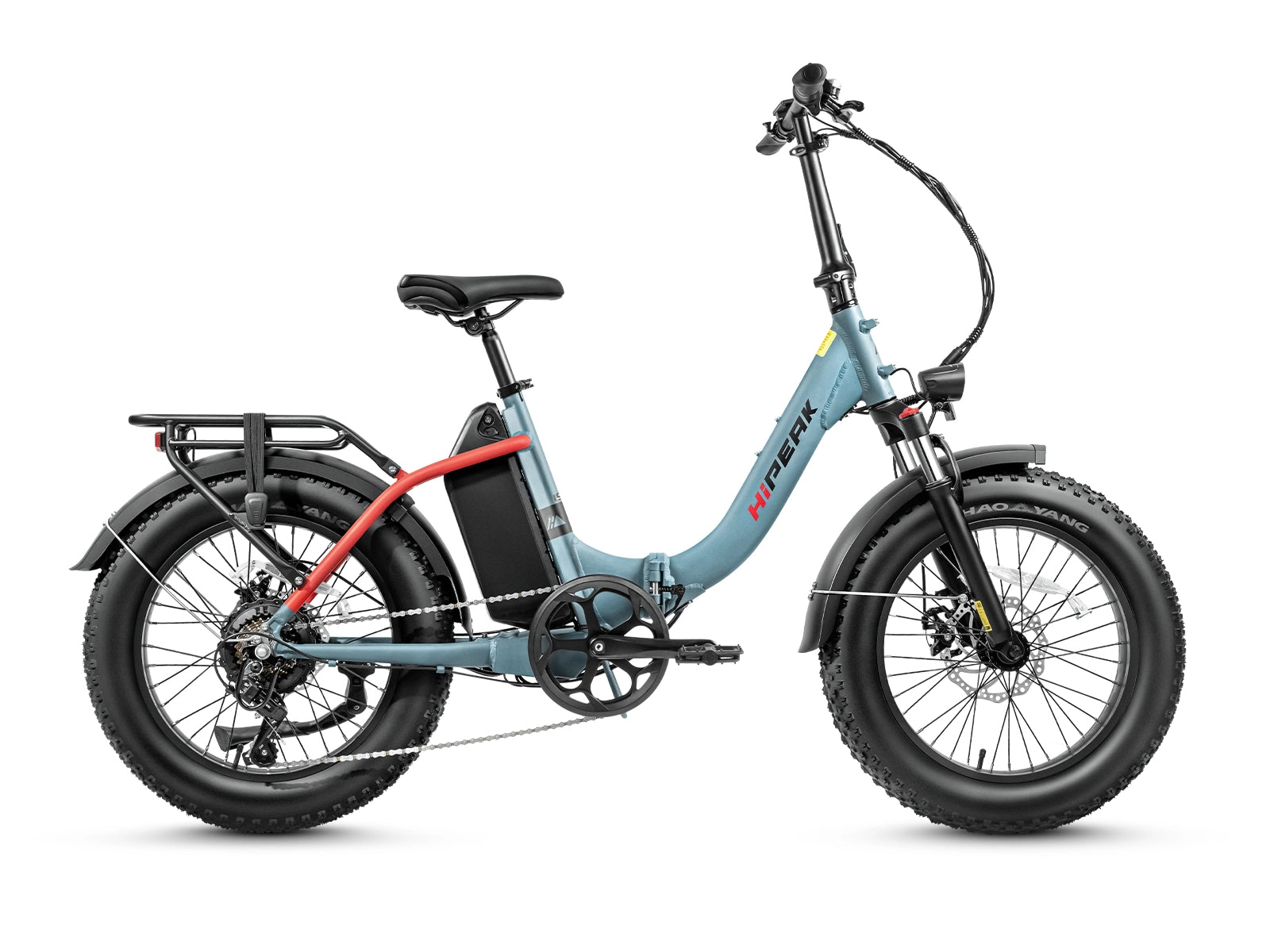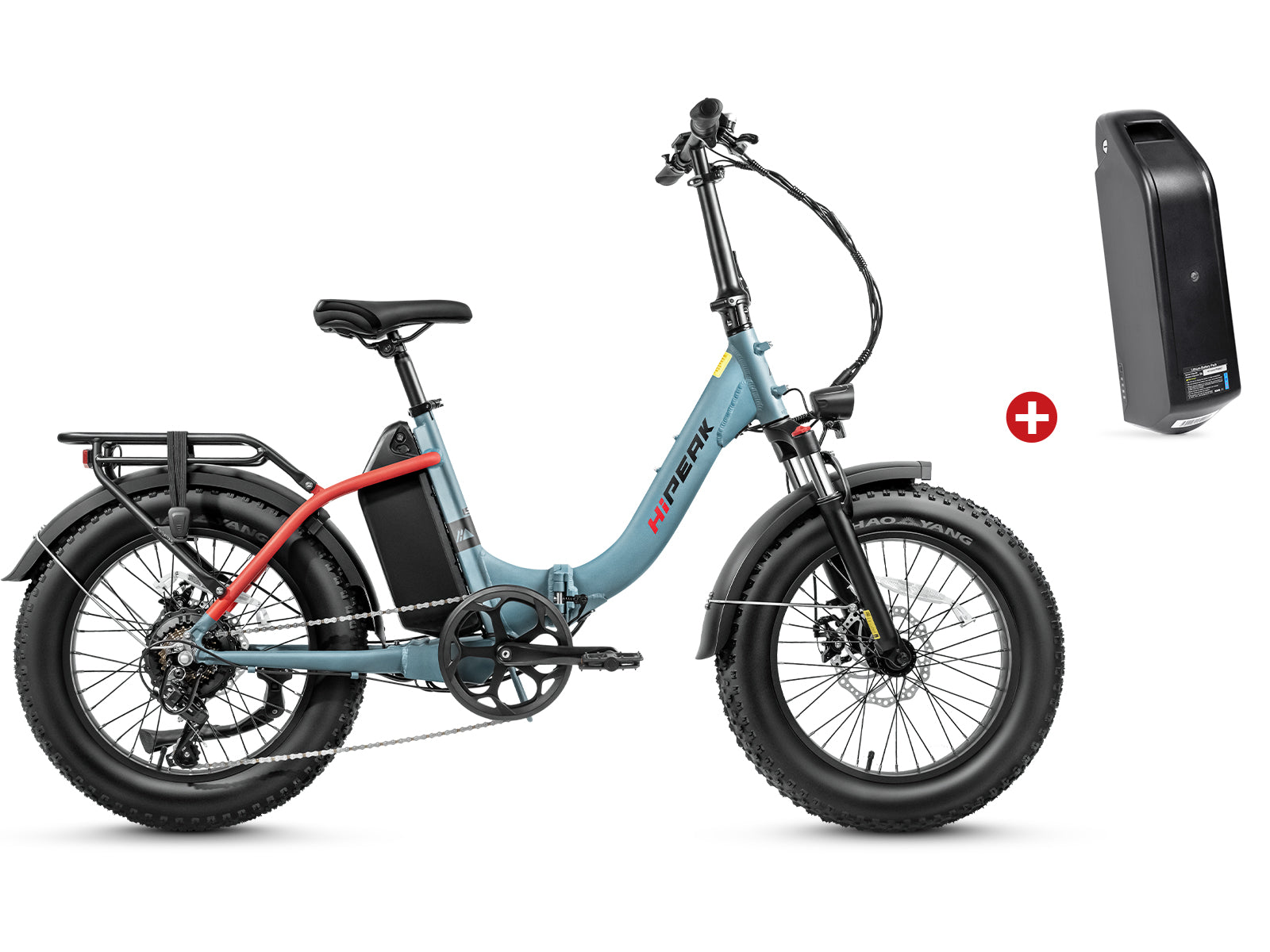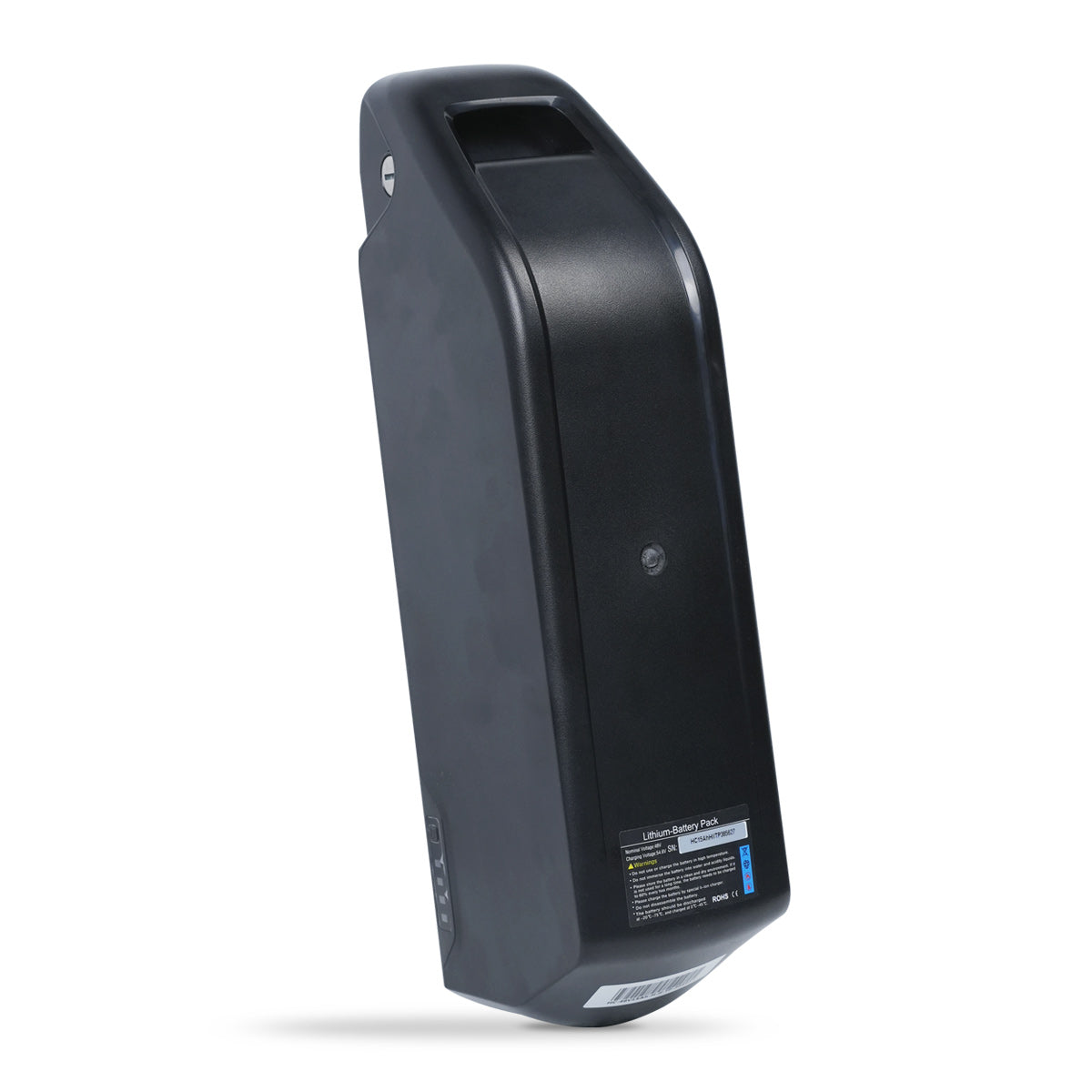How To Do a Folding E-Bike Ride Safety Check?

Who wants their bike journey to be ruined by the discovery of a nail they didn't realize was in their tire while they're already out on their ride? That is not the case with us! For this reason, it is always a good idea to complete a comprehensive bike check before you set out bicycling, regardless of whether you are a brand-new electric bike rider or even a seasoned one. This holds irrespective of whether you are riding a traditional bicycle or an electric one. Not only will this preserve your bike in pristine condition, but it will also ensure that you ride an electric bike safely.
Inspecting your bicycle down to the last axle nut and every inch in between will sometimes be necessary. Instead, we will provide you with a condensed list of items that should be on the bike inspection checklist before each ride. These include the ABCs, which stand for air, brakes, and chain, and specific things that should be monitored after each ride and on a more consistent basis. Let's get started!
Check Your Tire Pressure
You should start by pressing down on the wheel's top and feeling the tire bulge against the ground. While this method is not foolproof for determining whether your tires have the proper amount of air, it can give you a sense of how inflated your tires should be in an emergency.
Fat Tire Ebike often have a recommended pressure marked on the side. It is usually shown as a range in PSI (pounds per square inch) (e.g., 40 - 65psi). You should apply the highest pressure possible, whether riding on roads, paved trails, or smooth dirt trails. While mountain biking over rocky off-road paths, you should use a force around the lower end of the recommended range. Put some trust in a tire pressure gauge or your bicycle pump's built-in one. If the current stress exceeds the target pressure, run the pump until the pressure reaches the target level. Repeatedly pressing down on the wheel will give you an idea of what a fully inflated tire feels like. To finish the other spin, reverse the steps above. Tires' exteriors should be looked at. Look for bulges, threads, wires sticking out exposed studs, and severe tread wear. You should get a new tire if you see any of these.
Check The Rear Wheels and Drivetrain.
If your wheels are being kept in place by quick-release levers, you need to check to see that they are closed with the appropriate amount of tension to be effective. If you need to become more familiar with how to correctly operate the wheel quick-release levers, you should get assistance from an experienced bicycle technician. One hand should be used to grasp the handlebars, and the other should be used to grab the top of the front wheel. The bicycle should be lying flat on the ground. You should be able to rock the wheel from side to side, but there should be NO "play" or movement in this direction.
Raise the bike's front-end handlebars and rotate the front wheel. While the wheel is spinning, it should have a smooth feeling and sound. If it produces a noise like crunching or grinding, or the wheel wobbles from side to side while it spins, you should take it to a certified bicycle technician to get it serviced.
Check Your Brakes
Rock the bike both forward and backward while firmly gripping the brake lever on the left side of the handlebars (the front brake). The brakes should not slide, and they shouldn't make any squeaking noises, either. Repeat using the brake lever on the right-hand side (the rear). If either brake does not hold securely, you should not ride the bike and instead have a certified bicycle repair examine the brakes for you.
Check Crank Arms and Pedals.
You should stand on the right side when the bike is parked on the ground. The crank is the arm to which the pedal is attached; spin the cranks such that the pedal is linked in an upward-facing position. Take hold of the crank arm with one hand and give it a good pull, first in your direction and then in the bike's direction. There shouldn't be any movement or play that you can feel. If you feel movement in crank arm on both sides, the bottom brackets must be repaired or changed. This is because it prevents the crank arms from turning smoothly. If you simply feel movement on one side, so the crank arm may be loose. You can retighten it by using the bolt in the middle, but it will most likely need to be replaced if it has become loose.
Check Stem and Headphones
The handlebar is attached to the frame using a stem. Put the bike's front wheel between your legs and lean over the handlebars. Try twisting the bar without the wheel moving by gripping the handlebar tightly. Only ride the bike once it has been checked by a professional bicycle technician if the handlebar is loose or rotates. A bike's steering is made possible by a set of ball bearings housed in the head tube at its front. Grab the left-hand (front) brake lever, then rock the bike forth and backward while holding onto the outside of the bearing regions (at the top and bottom of the frame's head tube) to ensure they are correctly set. A professional bicycle technician should be consulted if the bearings have any wiggle room.
Check Your Chain
Check the chain thoroughly. In the case of light surface rust, thorough cleaning and relubrication should do the trick. If rust has solidified over the surface, it must be replaced. Turn the pedals counterclockwise to see if the chain can glide smoothly from one cog to the next without kinking, skipping, or binding. It should be able to spin without making much noise, such as squeaking or grinding. It must be serviced by cleaning and oiling if it exhibits any of these behaviors. The chain should be cleaned and lubricated if it has chunks of grease or filth. If you want to know how well your chain is holding up, you may use a unique instrument designed for that purpose. The chain must be changed if the inspection tool is too worn to function correctly.
Conclusion
While riding and maintaining an electric bike, safety should always come first. Your e-bike will serve you well into the future if you do these frequent safety inspections, in addition to your checks and regular maintenance. But if there's ever a time when you feel uneasy about performing any of the previous tests on your bike, consult the professionals at your neighborhood bike shop! They often employ skilled mechanics who can quickly diagnose the problem and get you back on the road. Remember to think about how often you plan on riding your bike. You may reduce your bike's frequency of expert tune-ups by reducing the miles you put on it. You'll want to prevent issues before they happen if your bike frequently. Finally, you want your bike to be in peak operating condition so that you may travel securely from one location to another.





















Leave a comment